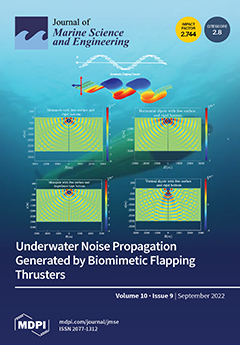In this study, we investigated the reproductive pattern of the commercially and ecologically important species,
Ostrea denelamellosa, to inform stock management strategies in South Korea. Prior to the reproduction experiment, the complete mitochondrial (mt) genome of the flat oyster,
Ostrea denselamellosa,
[...] Read more.
In this study, we investigated the reproductive pattern of the commercially and ecologically important species,
Ostrea denelamellosa, to inform stock management strategies in South Korea. Prior to the reproduction experiment, the complete mitochondrial (mt) genome of the flat oyster,
Ostrea denselamellosa, was analyzed using next-generation sequencing technology. Then, to determine the reproductive pattern of
Ostrea denselamellosa, we investigated monthly changes in the gametogenesis, reproductive cycle, and sex ratio from January to October 2021 in females. The total length of the mt genome sequence of
O. denselamellosa was 16,225 bp and contained 37 genes (13 protein-coding genes, 22 tRNA genes, and 2 rRNA genes). Molecular phylogenetic comparison with 20 known species of Pteriomorphia showed that
O. denselamellosa belongs to the family Ostreidae. In addition,
O. denselamellosa clustered together with the
O. denselamellosa Chinese strain, with a bootstrap value of 100%. Histological analysis indicated a discrepancy in gamete development of
O. denselamellosa with synchronous maturation of oocytes and asynchronous development of spermatozoa in gonads. The spawning activity occurred between May and September with a temperature range gap of 6.5 °C. The spawning activity occurred from May when the temperature reached 16.7 °C until September when the temperature dropped below 23.2 °C. Furthermore, sex ratio bias was observed. This is the first study to report the complete mt genome sequence and examine the reproductive pattern in native
O. denselamellosa in South Korea. Overall, these findings will help enhance the knowledge for the management and sustainable fishery of endangered oyster species including
O. denselamellosa in the South Sea of Korea.
Full article





